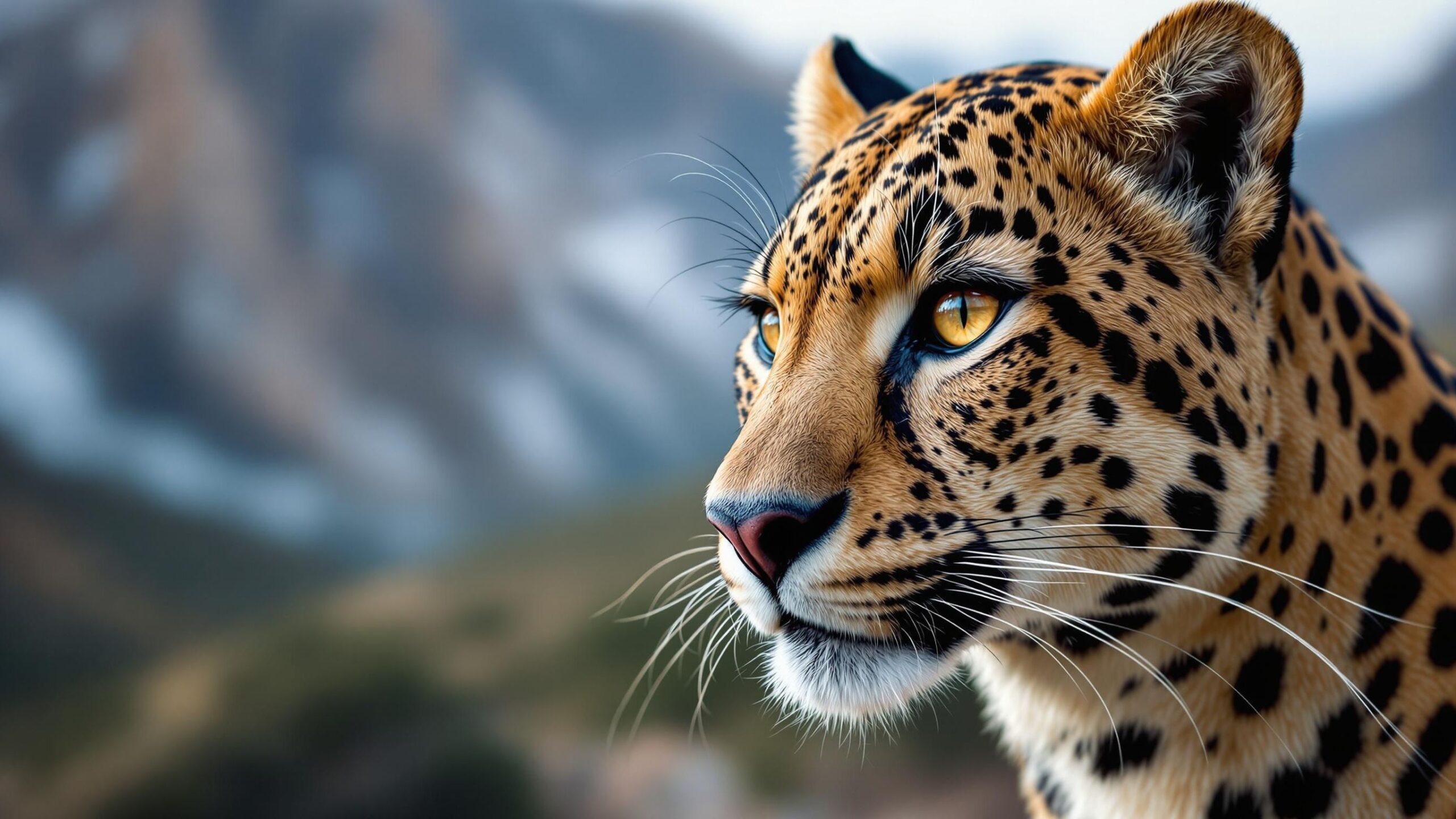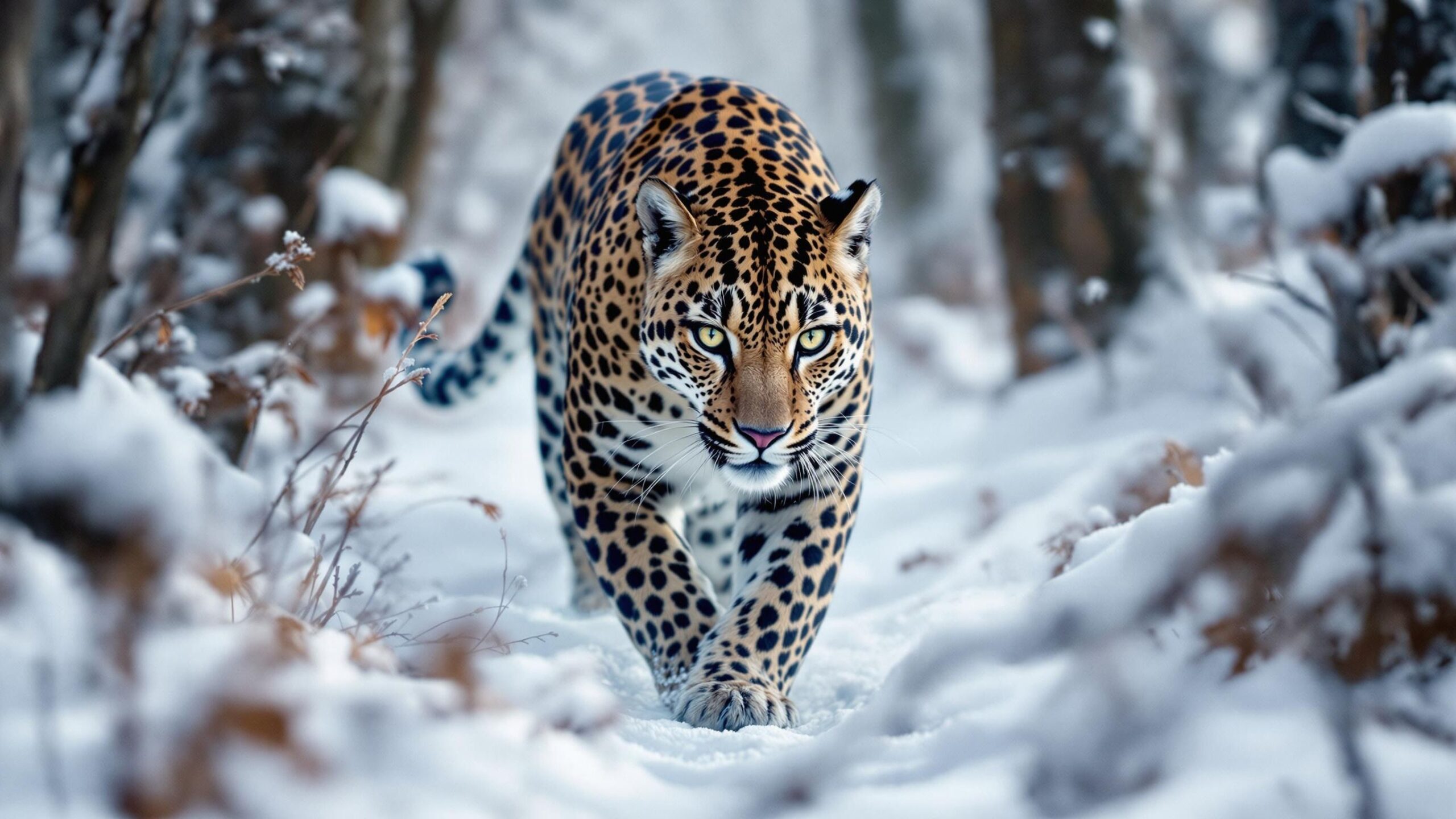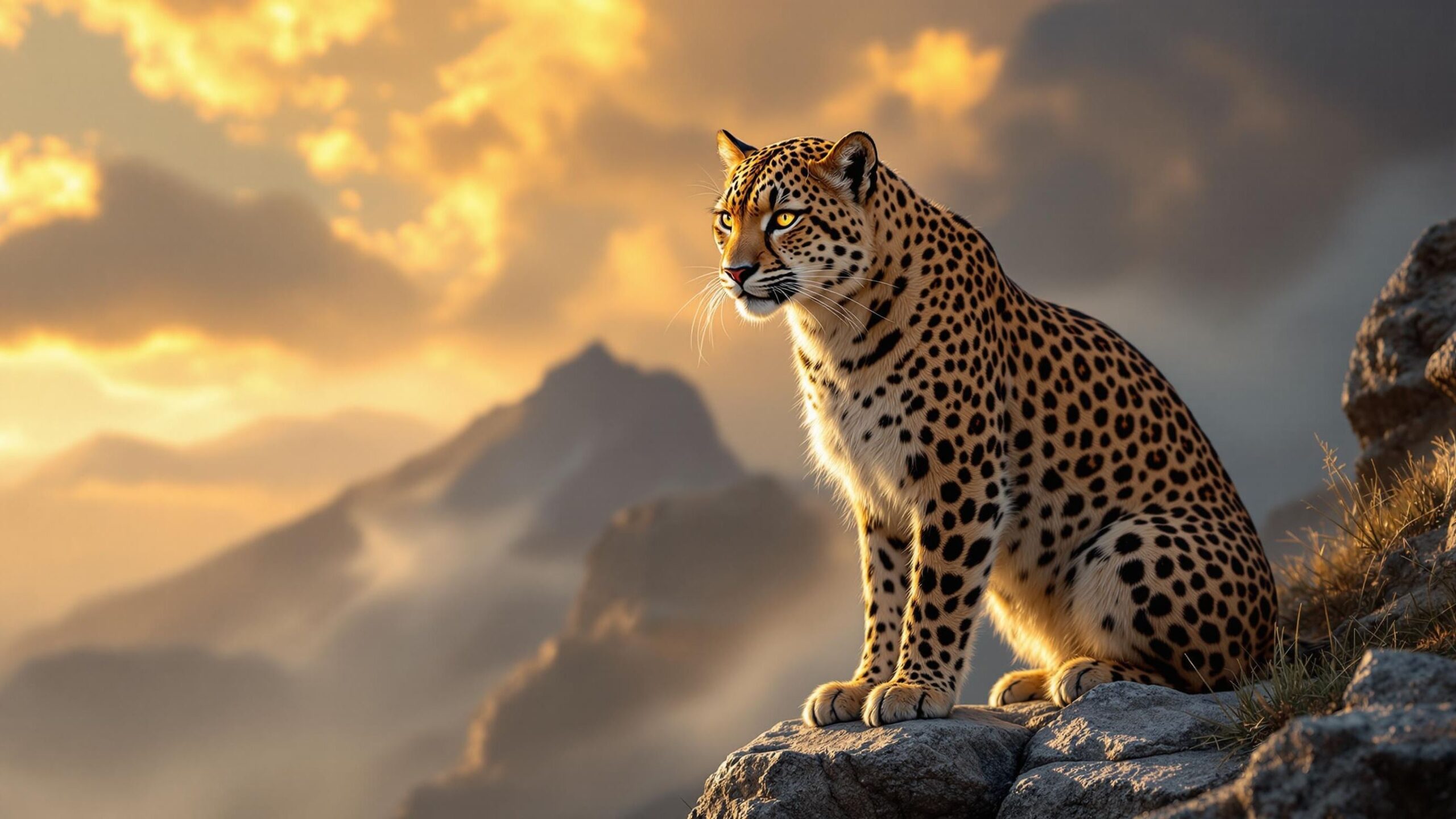Persian Leopard: The Ghost of the Caucasus
Deep within the rugged mountains of the Caucasus and the rocky wilderness of the Middle East, a majestic and elusive predator silently stalks its prey. With eyes like amber fire and a coat marked by a constellation of rosettes, the Persian leopard (Panthera pardus tulliana) reigns as one of the most enigmatic and endangered big cats on Earth. Known for its solitary nature, unparalleled agility, and striking beauty, this subspecies of leopard represents a fading link to the wild heritage of West Asia and the Caucasus region.
Though once widespread across vast territories from Turkey to Iran and even into parts of Central Asia, the Persian leopard’s range has dramatically shrunk over the past century. Today, it teeters on the edge of survival—its continued existence relying heavily on conservation action, habitat protection, and a renewed respect for its role in the natural world.
Origins and Classification
The Persian leopard is a subspecies of the common leopard (Panthera pardus), one of the most adaptable and widespread big cats in the world. Scientifically classified as Panthera pardus tulliana, the Persian leopard was once thought to be the same as the Anatolian leopard or even the Central Asian leopard. However, more recent genetic studies and morphological research have revealed it to be distinct, with unique physical and ecological characteristics.
Among the nine recognized leopard subspecies, the Persian leopard is one of the largest, both in terms of body size and geographic range—at least historically. This distinction adds an air of gravitas to its presence and heightens the urgency of preserving what remains of its lineage.
Physical Characteristics: Built for Survival
The Persian leopard is a creature sculpted by the harsh and unforgiving landscapes it inhabits. Compared to its African cousins, it is noticeably larger, with males often weighing between 60 and 90 kilograms, and females slightly smaller. This size advantage may be a crucial adaptation for surviving the colder climates and taking down larger prey found in mountainous regions.
Its dense fur is pale cream to light golden, adorned with scattered black rosettes. This coloration provides effective camouflage against the rocks and scrublands of its native terrain. The tail is long and thick, aiding in balance when navigating steep, craggy slopes. The Persian leopard’s eyes, piercing and intelligent, are a vivid yellow or amber—an enduring image of feline intensity.
But this leopard’s adaptations go beyond its appearance. It is an exceptional climber, agile enough to leap between rocky ledges with effortless grace. It can run at bursts of high speed when necessary but often relies on stealth and patience. In many ways, it is a master of shadow and silence, thriving in landscapes where few other predators dare to tread.
Habitat and Range: Mountains, Forests, and Deserts
Historically, the Persian leopard roamed widely across the Middle East, the Caucasus, and Central Asia. Its territories stretched from southeastern Turkey and the Caucasus Mountains of Georgia, Armenia, and Azerbaijan, through northern Iran and into Turkmenistan, and even touched parts of Afghanistan and Pakistan.
Today, its range is a fragmented patchwork. The largest and most stable populations are found in northern Iran, particularly in the Alborz and Zagros mountain ranges. Scattered individuals or small breeding groups still persist in parts of Azerbaijan, Armenia, and Turkmenistan. In recent years, signs of recovery have emerged, with conservation programs reporting new sightings in previously abandoned habitats, such as areas of Georgia and even northeastern Turkey.
These leopards prefer rugged, mountainous regions interspersed with forest and rocky outcrops. Their ideal habitat includes cliffs, ravines, and caves—landscapes that offer both cover and vantage points for hunting. They can also survive in dry, semi-arid regions, proving their incredible adaptability. However, human encroachment, deforestation, and infrastructure development have carved deep scars into these territories, making life increasingly precarious for the species.

Behavior and Diet: Solitary Hunters of the Hills
The Persian leopard is primarily nocturnal and fiercely solitary. Each individual commands a territory that can span hundreds of square kilometers, depending on prey availability and terrain. Males and females only come together during mating season, and even then, their companionship is short-lived.
As apex predators, Persian leopards sit atop the food chain. Their diet includes a variety of animals, with preferences depending on local availability. In Iran, for example, they hunt wild goats, mouflon, red deer, and boars. Smaller prey like hares, birds, and porcupines are also part of their menu. The leopard’s hallmark strategy is ambush—using stealth, cover, and careful tracking to get close before delivering a fatal pounce.
Despite their strength, Persian leopards avoid unnecessary confrontations. They are ghosts of the mountains—silent, stealthy, and almost never seen. Even in regions where they are known to exist, actual sightings are rare. Camera traps, paw prints, and prey carcasses are often the only signs of their passing.
Mating, Cubs, and the Circle of Life
The breeding behavior of Persian leopards follows the general pattern of other leopard subspecies, but with nuances tied to their environment. Mating can occur at any time of the year, but births typically happen in late winter or early spring, when temperatures begin to rise and prey becomes more accessible.
After a gestation period of around 90 to 105 days, the female gives birth to a litter of 1 to 4 cubs, usually in a secluded den. These dens are often hidden among rocks, in caves, or beneath thick vegetation. At birth, the cubs are blind and helpless, completely dependent on their mother. She raises them alone, fiercely protective and attentive, teaching them to hunt and survive. The young leopards stay with their mother for up to two years, gradually learning to navigate the treacherous terrain and mastering the skills required for independent life. Once they leave her care, they strike out to establish their own territories—if they can find unclaimed land in the ever-shrinking wild.
Threats and Challenges: A Species Under Siege
Despite their formidable presence and adaptability, Persian leopards face a gauntlet of threats. The most immediate is habitat loss. Expanding human settlements, agriculture, logging, and infrastructure projects have fragmented their habitat into isolated pockets. These broken landscapes limit breeding opportunities and expose leopards to a higher risk of conflict with humans. Poaching remains another critical danger. Leopards are illegally hunted for their beautiful pelts, and sometimes in retaliation for livestock predation. In rural areas, where pastoral communities graze sheep and goats near leopard habitats, human-leopard conflict can turn deadly. Without sufficient livestock protection measures, these encounters often end with a gunshot.
Road mortality is a growing concern, especially as highways cut through critical leopard corridors in Iran and the Caucasus. Vehicles kill not only leopards but also their prey, disrupting the delicate ecological balance. To make matters worse, a shrinking gene pool in small, isolated populations increases the risk of inbreeding and genetic decline. Without careful population management and cross-border cooperation, the long-term survival of the Persian leopard remains uncertain.
Signs of Hope: Conservation in Action
Despite the challenges, the Persian leopard has not been abandoned. Conservationists, governments, and local communities are working across borders to give this elusive predator a fighting chance.
Iran has emerged as a vital stronghold for the species. Over a dozen national parks and protected areas serve as refuges, including Golestan National Park, which holds one of the highest leopard densities in the region. Anti-poaching patrols, wildlife corridors, and environmental education programs are being implemented to reduce human-wildlife conflict. In the Caucasus, international collaborations are bearing fruit. The Leopard Reintroduction Program in Russia, led by the Sochi National Park and WWF-Russia, aims to reestablish leopards in the Western Caucasus through captive breeding and release efforts. Armenia, Azerbaijan, and Georgia have also increased monitoring efforts, using camera traps, satellite tracking, and public awareness campaigns.
The Persian Leopard Working Group—a coalition of scientists, NGOs, and policymakers—is actively coordinating conservation strategies, research, and data sharing across countries. Their work includes studying leopard behavior, genetics, and ecology to better inform management decisions. Crucially, local communities are being included in these efforts. In regions where leopards roam, residents are being trained in wildlife coexistence practices, compensation programs for livestock loss are being explored, and ecotourism initiatives are starting to provide alternative sources of income.

Cultural Significance: A Symbol of Pride and Mystery
The Persian leopard holds a revered place in the folklore and cultural heritage of the regions it inhabits. In Iran, the leopard is sometimes seen as a symbol of strength and resilience, woven into literature, poetry, and visual art. In parts of the Caucasus, it is a creature of legend—feared, respected, and occasionally mythologized as a mountain spirit or ghost.
Modern conservationists are tapping into this cultural reverence to build public support for the leopard’s protection. Campaigns that frame the Persian leopard not as a threat, but as a national treasure, have begun to change public perception, especially among younger generations.
A Future Worth Fighting For
The story of the Persian leopard is far from over. Though the challenges are immense, they are not insurmountable. The leopard’s survival will depend on a mosaic of efforts—scientific research, legal protection, habitat conservation, and grassroots involvement. It is a task that transcends borders, cultures, and politics.
What the Persian leopard represents is larger than one animal species. It symbolizes the wildness that still endures in a rapidly changing world, the beauty of ecosystems not yet lost, and the power of collective action in defending nature’s most iconic beings. For those lucky enough to catch a glimpse of this mountain ghost—perhaps a flicker of rosettes against the stone, a flash of golden eyes in the dusk—it is a moment never forgotten. And for the rest of us, the Persian leopard serves as a powerful reminder that the fight for wildlife is the fight for our shared planet.

